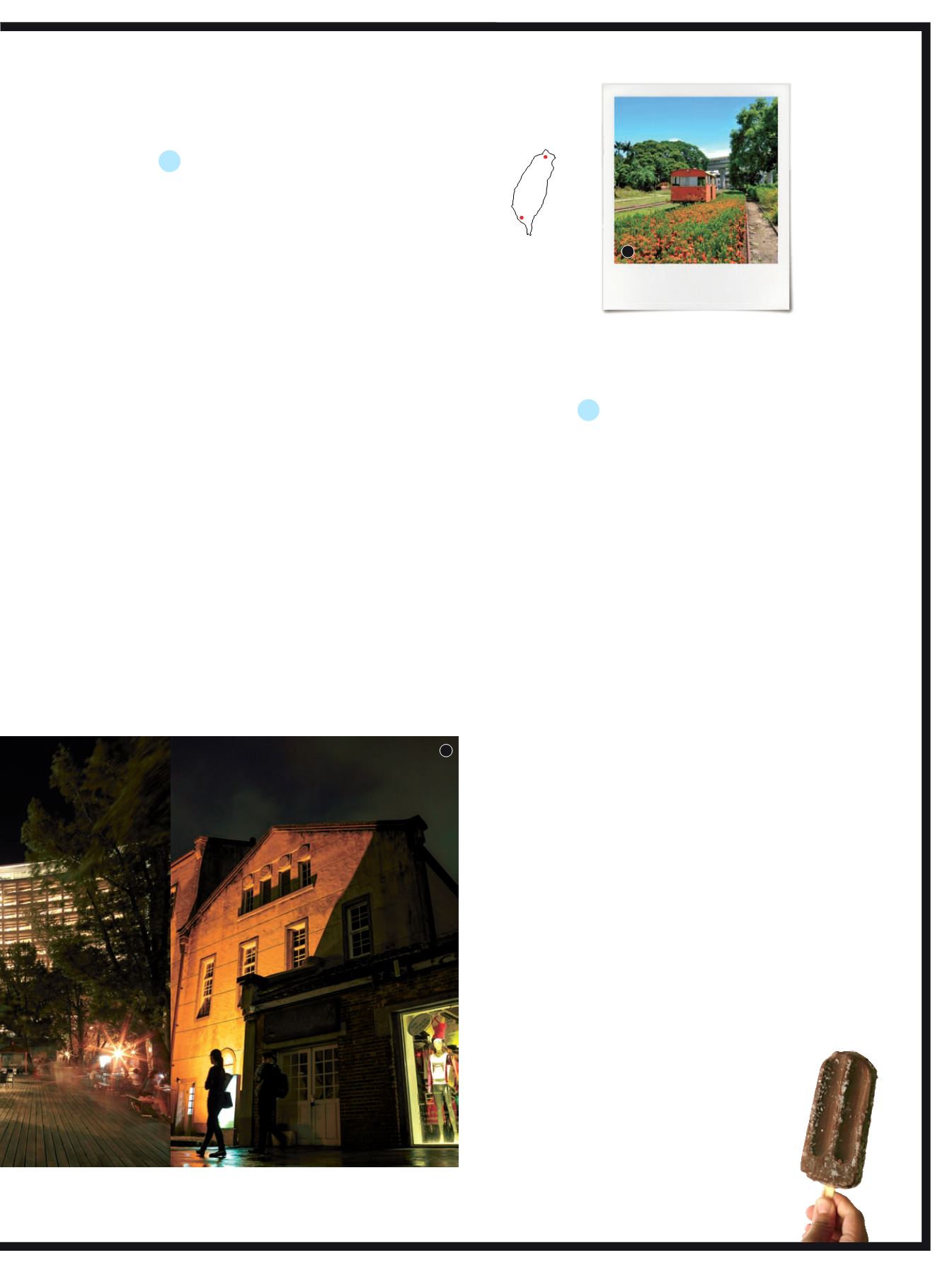
PHOTOGRAPHY: TOP PHOTO GROUP / IMAGE TAIWAN
One of the best-known examples is Huashan 1914 Creative Park
in downtown Taipei. This former winery was established in 1914
(hence the name) and was slated for razing when, in an episode
much celebrated by social activists, a theater troupe marched in
and took over. The actors argued that the warehouses were ideal
spaces for rehearsals and performances. The government
relented, and a dedicated arts space (
)
was born.
There’s a similar story behind Songshan Cultural and
Creative Park
) 4km to the east.
The surviving part of a 1930s tobacco-processing complex (much
was cleared to make way for the not-yet-finished Taipei Dome),
the park hosts the Taiwan Design Museum as well as temporary
exhibitions. The pond and its surrounding foliage sustain
valuable biodiversity in a neighborhood dominated by concrete
and motor vehicles. In an ever more health-conscious society, it’s
appropriate that places that formerly made liquor and cigarettes
are given new and entirely wholesome reasons to exist.
For decades, sugar accounted for more than half of Taiwan’s
exports. However, because other countries are able to produce
the commodity far more cheaply, the industry has gradually
dwindled to almost nothing. The number of active sugar
refineries across Taiwan has fallen from 49 to just three. Several
have been demolished, but some are now cultural facilities. Two
of the latter in southwest Taiwan are easy to reach by train.
Between 1901 and 1999, the refinery at Qiaotou in
Kaohsiung processed up to 1,000 tons of sugarcane per day. The
20-hectare complex — which includes staff dormitories and air-
raid shelters as well as buildings in which the cane was stored or
crushed — is almost totally intact. Baroque and Japanese features
excite architecture buffs, but go unnoticed by many visitors. Most
of the latter come for a short ride on one of the narrow-gauge trains
that used to bring in cane from nearby plantations, or to see a
performance by the resident Ten DrumArt Percussion Group.
Qiaotou is the second former sugar refinery utilized by Ten
Drum. Since 2007, the group’s main base has been what’s now
called Ten Drum Culture Village (
) in
Tainan’s Rende District, near Chimei Museum. Under the terms
of its contract with Taiwan Sugar Company — the state-run
corporation that still owns most of Taiwan’s refineries, as well as
a great deal of land — Ten Drum is also responsible for
preserving the local ecosystem and the site’s sugar-industry
relics. One of the performance spaces at Rende is a brick-lined
cistern where water heated during the refining process was left to
cool. Another is inside the principal building; as the audience
enters or leaves, they pass immense vats and a tangle of
pipework.
> TAIPEI’S VICE FACTORIES TAKE A
HEALTHIER DIRECTION
1
> A SWEET TRANSITION FOR TAIWAN’S
SUGAR PLANTS
2
1-3
Huashan 1914 Creative Park, Taipei.
4
Song-
shan Cultural and Creative Park, Taipei
.
5
Huashan
1914 Creative Park, Taipei
.
6
Qiaotou Sugar Industry
Culture Park, Kaohsiung.
1-3
З̨̏ٙശʆ
1914
˖ʷ௴จପุਜ
f
4
̨̏
ٙؒʆ˖௴ਜ
f
5
ശʆ
1914
˖ʷ௴จପุਜf
6
З৷ඪٙ᎘ጟᅀ˖௴ਜf
5
6
Qiaotou Sugar
Industry Culture
Huashan
1914,
Songshan
Cultural
and
Creative
Park
Park


